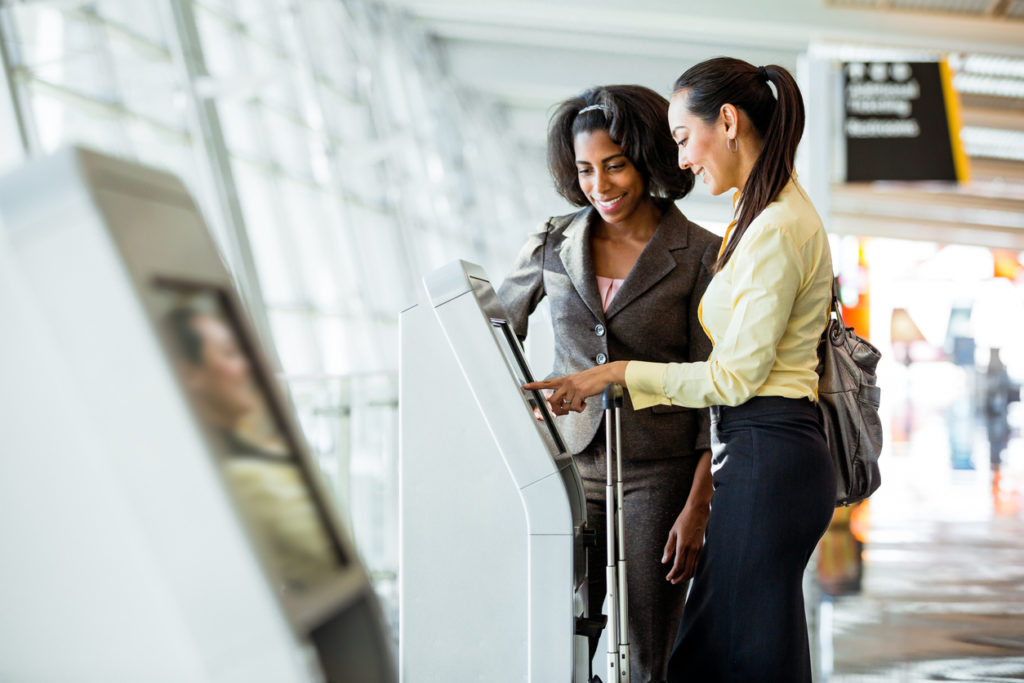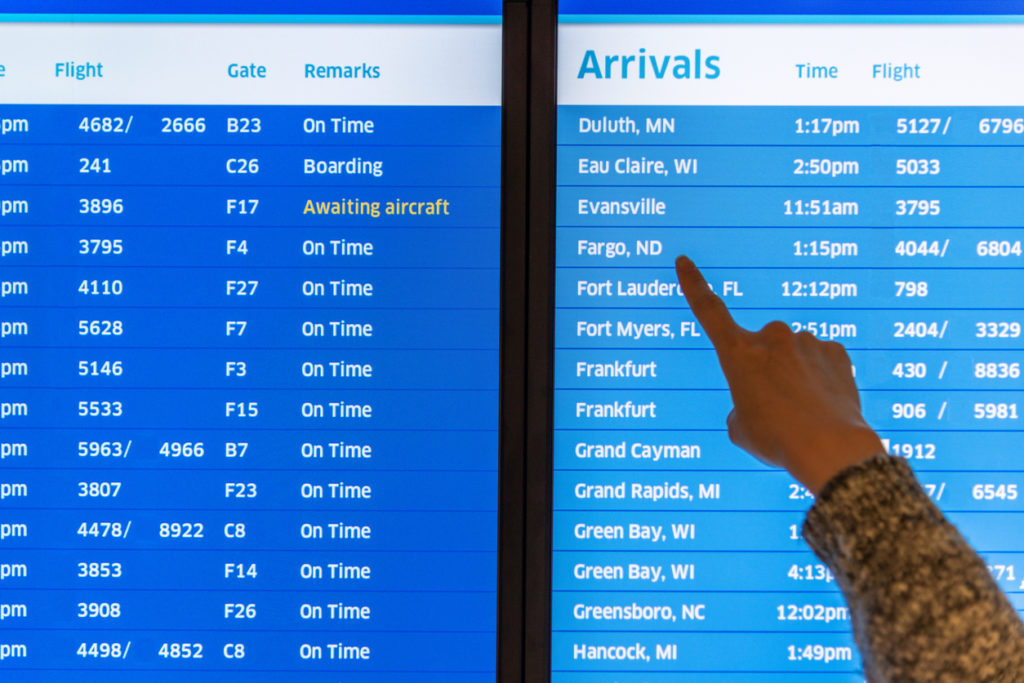What is digital wayfinding?
Wayfinding is the act of navigating within a single location, or between separate locations. Digital wayfinding allows navigation to be facilitated electronically via maps and digital routing, and is the next evolutionary step in directional assistance, popularized by apps such as Waze and Google Maps. These apps use external data to help guide users from one place to another, while providing them with the most efficient way of doing so.

What is a digital wayfinding kiosk?
Digital wayfinding via self-service kiosks allows organizations to take the concept of electronics-assisted navigation once only used in vehicles, and apply it to a range of environments, including corporate offices, hospital campuses, museums, and shopping malls. This ensures that employees, visitors and guests are able to easily find their way within and between various points of interest in any given area.
Digital wayfinding utilizes displays -- usually touchscreen -- to showcase information that can be used for directional support. These displays may be in the form of large freestanding kiosks or wall-mounted signage, or instead on tablets and smartphones. Large-scale kiosks and displays are utilized to present broadly-relevant information in full view of as many people as possible, while smaller, personal displays are used by individuals for more specific types of wayfinding.
What is a wayfinding system?
A wayfinding system refers to a framework -- digital or analog -- designed to assist end-users in locating people or places. The idea is two-fold: the objective is to provide assistance to users by providing an easy-to-follow guide, while also helping the same individuals to become more familiar with their surrounding area. This is normally achieved through the use of arrows or color indicators to help create familiarity with a given environment. In addition to color association, there are often signs and arrows to help guide users through an area that are similar in many respects to road signs. The purpose of wayfinding is to not only to direct guests and visitors efficiently to a destination but to help them return to it easier in the future should they be required to do so

What industries use digital wayfinding?
Access to digital wayfinding is fast becoming an expectation rather than an exception across multiple industries, and organizations can use this to their advantage. From greater consumer engagement to increased customer satisfaction, providing digital wayfinding assistance can result in benefits that one would be hard-pressed to ignore.
- Education: Colleges and universities utilize tools to help students, visitors and vendors better navigate their campuses. This proves invaluable for new students who are still getting comfortable in their surroundings, and keeps visitors running on-time for appointments and meetings.
- Corporate Headquarters: Companies with large, multi-building campuses, such as Google’s “Googleplex” and Facebook’s U.S. headquarters, employ wayfinding technology to help their various contractors and vendors better navigate their campuses. These same tools ultimately assist their own employees in finding correct meeting rooms or offices.
- Healthcare: Large hospital campuses utilize digital wayfinding for many of the same reasons that Google might. However, hospitals also deploy wayfinding systems for the convenience of patients and caregivers, many of whom may be in need of urgent medical assistance or experiencing physical limitations that limit mobility.
- Airports: Airports tend to be quite large, and can be complicated to navigate. With the use of digital wayfinding, airports have become less stressful environments and travelers are less likely to miss flights.
- Shopping Malls: Shopping malls employ freestanding digital wayfinding kiosks to assist customers in locating relevant stores, services or restaurants. By utilizing wayfinding tools, shoppers can quickly familiarize themselves with the mall layout and find what they need faster, leading to a more positive experience and a greater likelihood that they will return.
- Government: Government buildings such as courthouses and DMVs use digital wayfinding to assist people in locating the correct room or building in which they are required to be.
What are the benefits of digital wayfinding signage and kiosks?
- Accurate, up-to-date information: The most important benefit of a digital wayfinding system is that it is able to provide information in real time. This is invaluable in environments such as public transportation, but it is also incredibly useful in other industries such as hospitality. Simply providing relevant information in this manner can be an indispensable tool for both customers and staff.
- Organization: Wayfinding systems help create more organized, efficient environments that utilize less manpower. This frees up essential staff to focus on more urgent tasks, including assisting individuals who require more in-depth help. This can result in greater operational efficiencies, cost savings, and increased customer satisfaction.
-
- Eco-Friendly: Digital wayfinding requires no paper, which means no waste. Many displays are now designed to be energy efficient, and generally use far less electricity than typical models of the past.
- Convenience: Interactivity creates opportunity for customer self-service, which allows them to engage directly with the wayfinding system at their own pace and leisure, while freeing up staff for more productive tasks.
- Modern/Attractive: Modern wayfinding displays can provide attractive, eye-catching centerpieces in lobbies and other common areas. It also offers an opportunity for brand enhancement; businesses showcasing digital wayfinding systems are perceived as more modern and forward thinking than those utilizing analog options.
- Easy to use/inclusive: Digital wayfinding kiosks are simple to use and accessible for the vast majority of users, allowing them to access the information they need without the hassle of finding a customer service agent.
Digital wayfinding systems are quickly becoming a part of the fabric of consumer culture. Whether they are assisting with navigation on college campuses, within shopping malls or in airports, digital wayfinding kiosks make it easy for everyone to find exactly what they need, and where they need to go.


